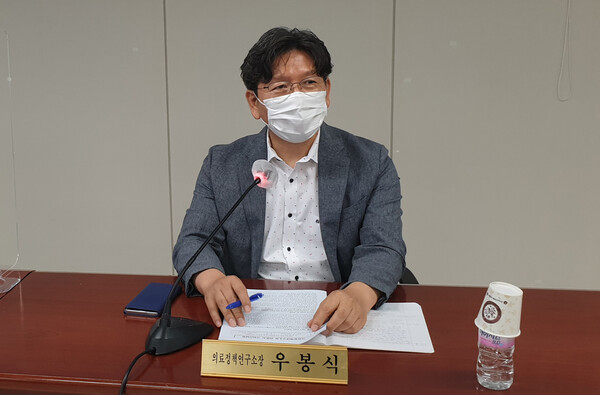Citizens Coalition for Economic Justice (CCEJ) has called for increasing the numbers of public medical schools and public hospitals, pointing out that the gap in medical resources among regions leads to the gap in amenable mortality rate.
The Korea Medical Association refuted it on Tuesday, saying the increase in public medical schools and public hospitals cannot be seen as an answer.
“Public hospitals that have become nursing hospitals are not playing their public role,” wrote Woo Bong-shik, head of the Medical Policy Research Institute at KMA, on his Facebook page,

Citing the Public Health and Medicine Act, Woo said, “According to the law, public medical institutions are obliged to prioritize jobs hard to be tackled by private hospitals due to low profitability and require a swift response, such as providing healthcare service to low-supply sectors and responding to disasters and infectious diseases.”
However, he pointed out that most public hospitals are playing their primary role but provide profit-oriented treatment. “That explains why the public hospitals, with more than 60,000 beds, are facing criticism that they do not even accommodate Covid-19 patients who need to be hospitalized,” he said.
He pointed out that the number of public hospital beds in Korea is not small compared to other OECD countries, stressing the problem lies with their failure to play the role of public hospitals true to their name.
In 2019, the number of beds at private hospitals totaled 559,417, and that of public hospitals amounted to 62,250, accounting for 9.7 percent of the total. In terms of beds alone, however, Korea has more than the U.K., he noted.
Woo also cited the OECD statistics of 2021.
Korea’s amenable mortality rate stood at 42 persons, far lower than the average of 74.4 in the club of most rich countries. That of Seoul and North Chungcheong Province was 36.36 and 46.95, compared with Australia’s 46.0, the fourth lowest in the Organization for Economic Cooperation and Development.
Woo said that a reckless increase in doctors could lead to higher medical costs, pressuring health insurance finance.
“Health service comprises various policy considerations, such as health and medical workforce, diagnosis and treatment equipment, facilities, means of medical fees, medical care delivery system, population aging, and the share of public hospital beds,” he said. “The matter should be examined and solved from various systemic viewpoints in addition to the number of doctors.”
Based on OECD’s average figure, Woo said the increase of one physician raises the medical cost by 22 percent.
“Korea’s health insurance is based on medical acts. Will medical costs not increase even if we increase doctors? Health insurance finance will collapse soon,” he said.
He also blamed hospital unions for management failures of public hospitals, leading to healthcare failures, citing the case of the Jinju Public Hospital, which was closed by the then Governor Hong Jun-pyo of South Gyeongsang Province.

